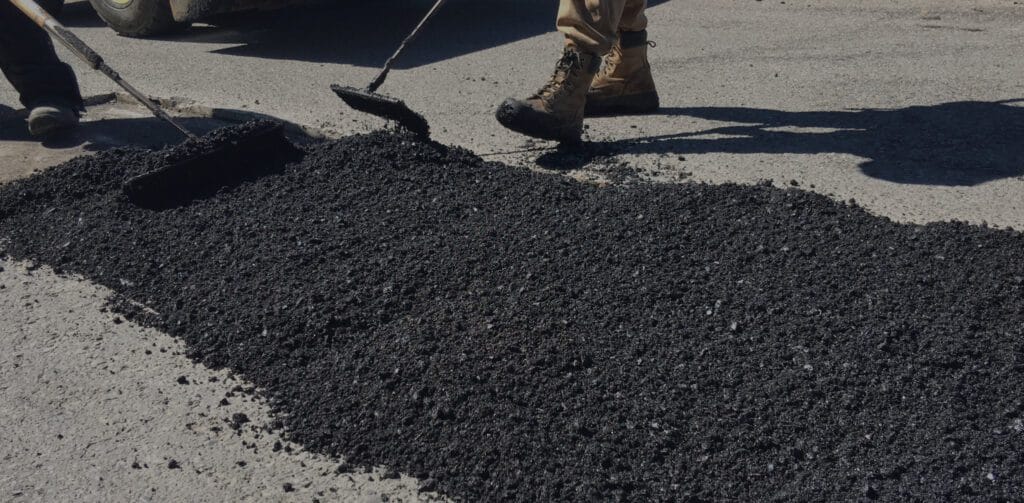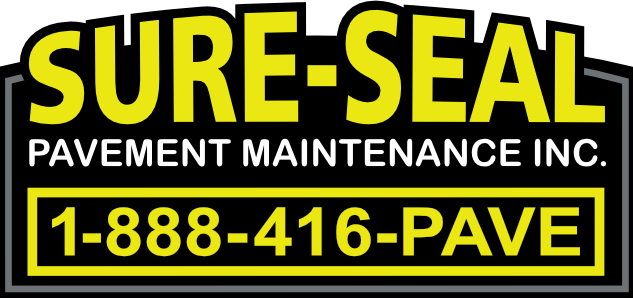What Is Asphalt Resurfacing?
 Asphalt resurfacing is the replacement of the top layer of an asphalt surface. This is done when larger sections have developed cracks, dips, and other damage from wear and tear or an incident. This is a cost-effective service to prevent further damage, improve the aesthetics of a parking lot, and extend the existing surface’s lifespan.
The resurfacing process entails a thorough inspection of the existing asphalt overlay before preparing the surface by clearing obstacles such as barriers or speed bumps. Asphalt milling and repairs are done to any existing cracks, potholes, and dips. These areas are removed, treated, and covered over with a thick layer of asphalt.
Resurfacing can improve a section of your property that has poor drainage. Resurfacing is often done on parking lots, roads, and driveways that have had small patching jobs done over the years. For best results, any traffic should be kept off the newly resurfaced area for one to three days.
Asphalt resurfacing is the replacement of the top layer of an asphalt surface. This is done when larger sections have developed cracks, dips, and other damage from wear and tear or an incident. This is a cost-effective service to prevent further damage, improve the aesthetics of a parking lot, and extend the existing surface’s lifespan.
The resurfacing process entails a thorough inspection of the existing asphalt overlay before preparing the surface by clearing obstacles such as barriers or speed bumps. Asphalt milling and repairs are done to any existing cracks, potholes, and dips. These areas are removed, treated, and covered over with a thick layer of asphalt.
Resurfacing can improve a section of your property that has poor drainage. Resurfacing is often done on parking lots, roads, and driveways that have had small patching jobs done over the years. For best results, any traffic should be kept off the newly resurfaced area for one to three days.
What Is Asphalt Patching?
 Commonly referred to as surface patching, asphalt patching is the repair of holes or cracks within the surface. This temporary form of asphalt repair is done in the early stages of damage to prevent the need for resurfacing or replacement. Without a patch, the targeted area can deteriorate to the point where cracks will spread and grow larger.
Cracking of asphalt pavement occurs when the pavement is exposed to temperature fluctuations and moisture. Moisture seeps into the crevices of the asphalt pavement and fluctuating temperatures cause the moisture to expand throughout the asphalt. Cracks then form.
Asphalt patching is a cost-effective way to repair damage by filling in the targeted section. The fill can be hot or cold asphalt, emulsion mixes, and crushed gravel and soil. Patching will only be effective on areas that have damage that is between one to two inches deep.
Commonly referred to as surface patching, asphalt patching is the repair of holes or cracks within the surface. This temporary form of asphalt repair is done in the early stages of damage to prevent the need for resurfacing or replacement. Without a patch, the targeted area can deteriorate to the point where cracks will spread and grow larger.
Cracking of asphalt pavement occurs when the pavement is exposed to temperature fluctuations and moisture. Moisture seeps into the crevices of the asphalt pavement and fluctuating temperatures cause the moisture to expand throughout the asphalt. Cracks then form.
Asphalt patching is a cost-effective way to repair damage by filling in the targeted section. The fill can be hot or cold asphalt, emulsion mixes, and crushed gravel and soil. Patching will only be effective on areas that have damage that is between one to two inches deep.
Asphalt Patching vs. Asphalt Resurfacing
| Factors | Asphalt Patching | Asphalt Resurfacing |
| Cost-Efficiency | Easiest and least expensive short-term solution. | More expensive than patching and less expensive than replacement; more cost-efficient than patching. |
| Environmentally Friendly | Asphalt is 100% recyclable; porous asphalt allows for proper drainage. | Asphalt is 100% recyclable; porous asphalt allows for proper drainage. |
| Promotes Water Drainage | Prevents water damage from the existing crack or hole. Cannot provide control over the movement of water and carry it away from the surrounding surface. | Protects against water buildup and diverts running water as it gives a smooth seamless finish on top and along the edges of the paved area. |
| Safety | Temporary fix to cracks and potholes. Rough edges may cause the patching to lift. | More permanent solution as asphalt is applied to the edges of the area. |
| Timely Installation | Weather-dependent; used as a temporary measure; patching takes little time depending on the number of cracks or holes to fill. | Can be laid in any type of weather, except snow; can take longer than patching as the existing surface is removed, cleaned, and paved. |
| Asphalt Condition | Cracks and holes need to be cleaned and filled before asphalt is applied; patching can be done in an area that is up to two inches deep. | Underlying asphalt needs to be cleaned and smoothed before resurfacing application. |
| Durability | Reliable for 2 to 3 years, depending on weight and flow of traffic. | Lasts between 8-15 years, adding to the lifespan of the underlying asphalt pavement. |

